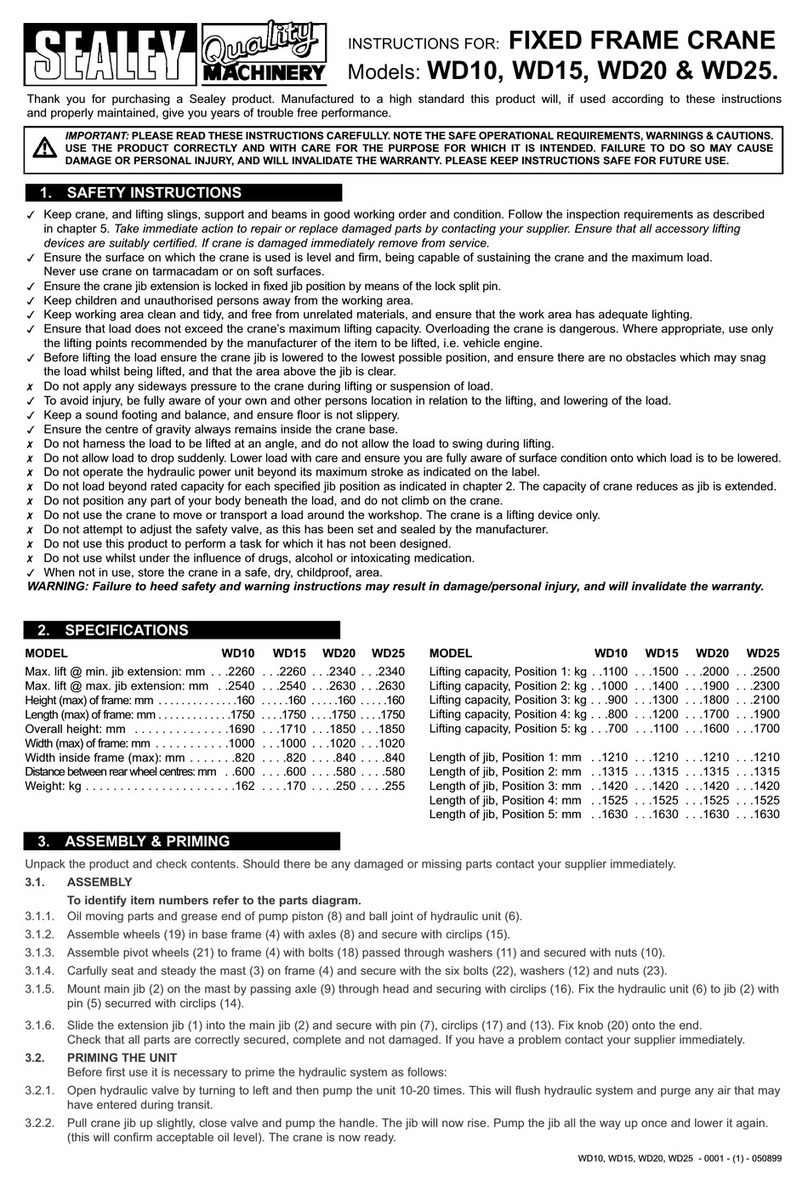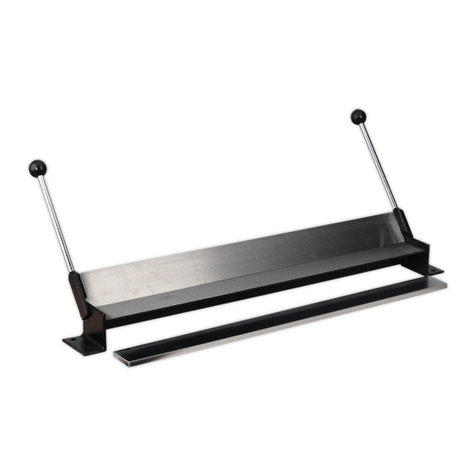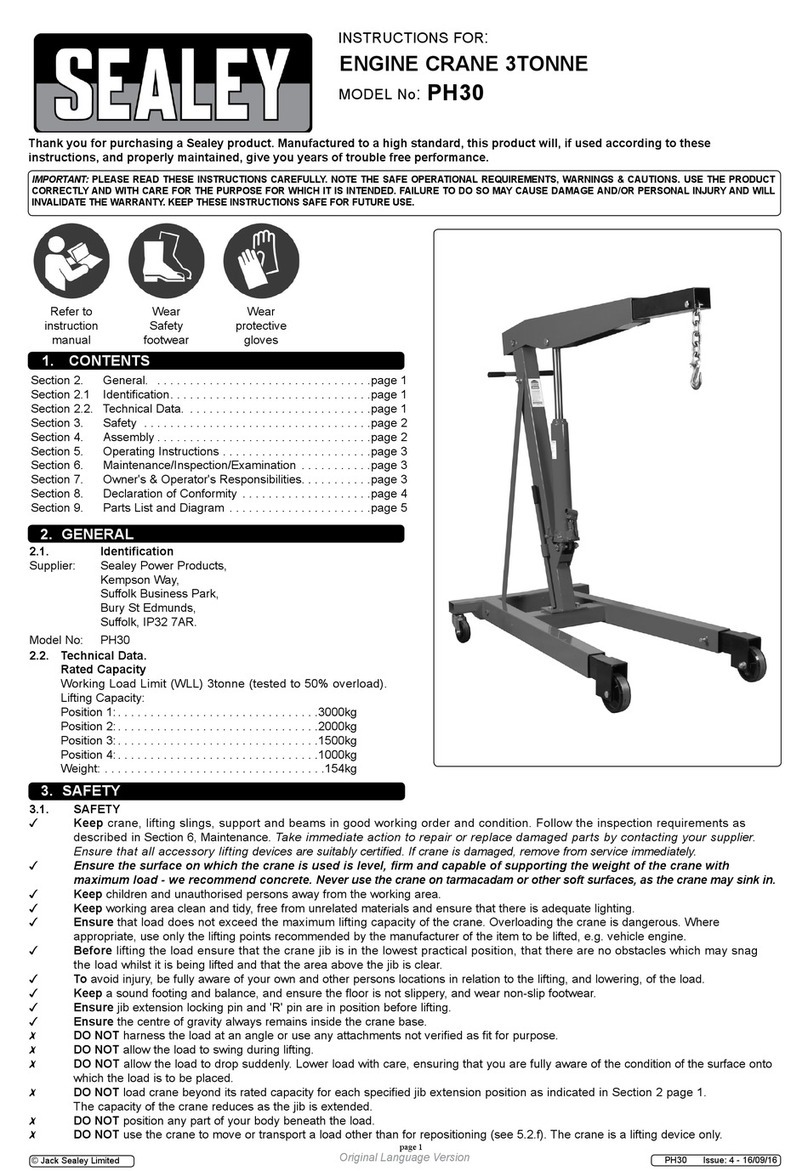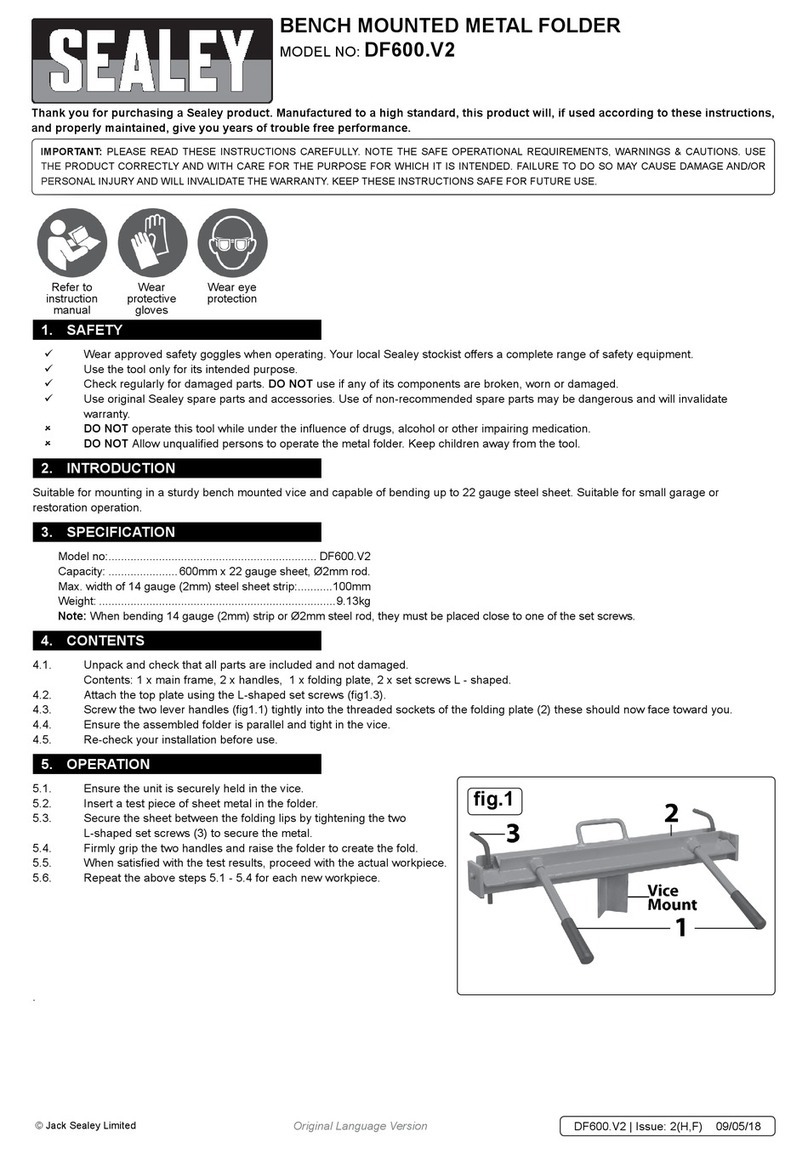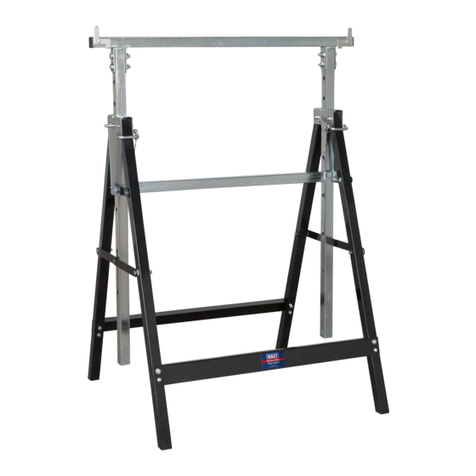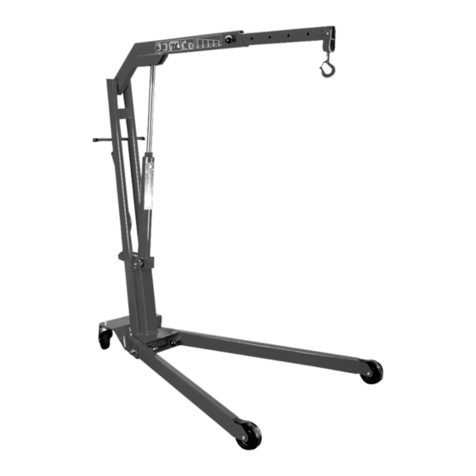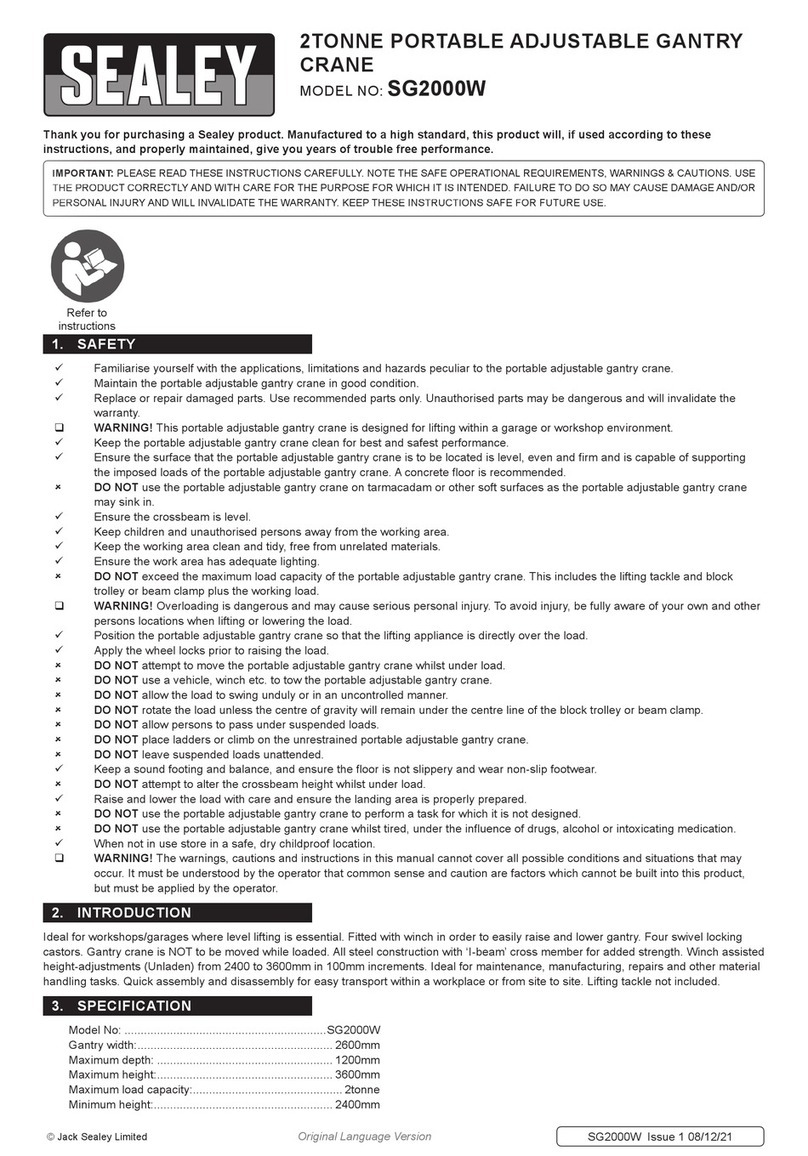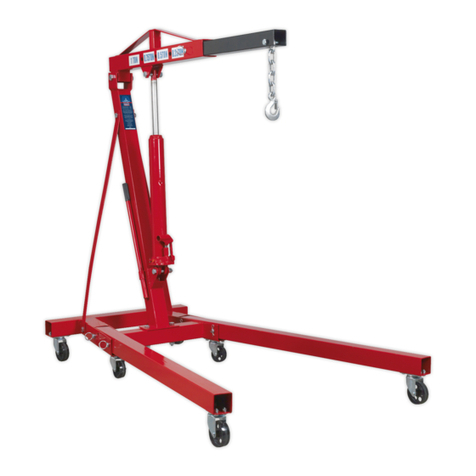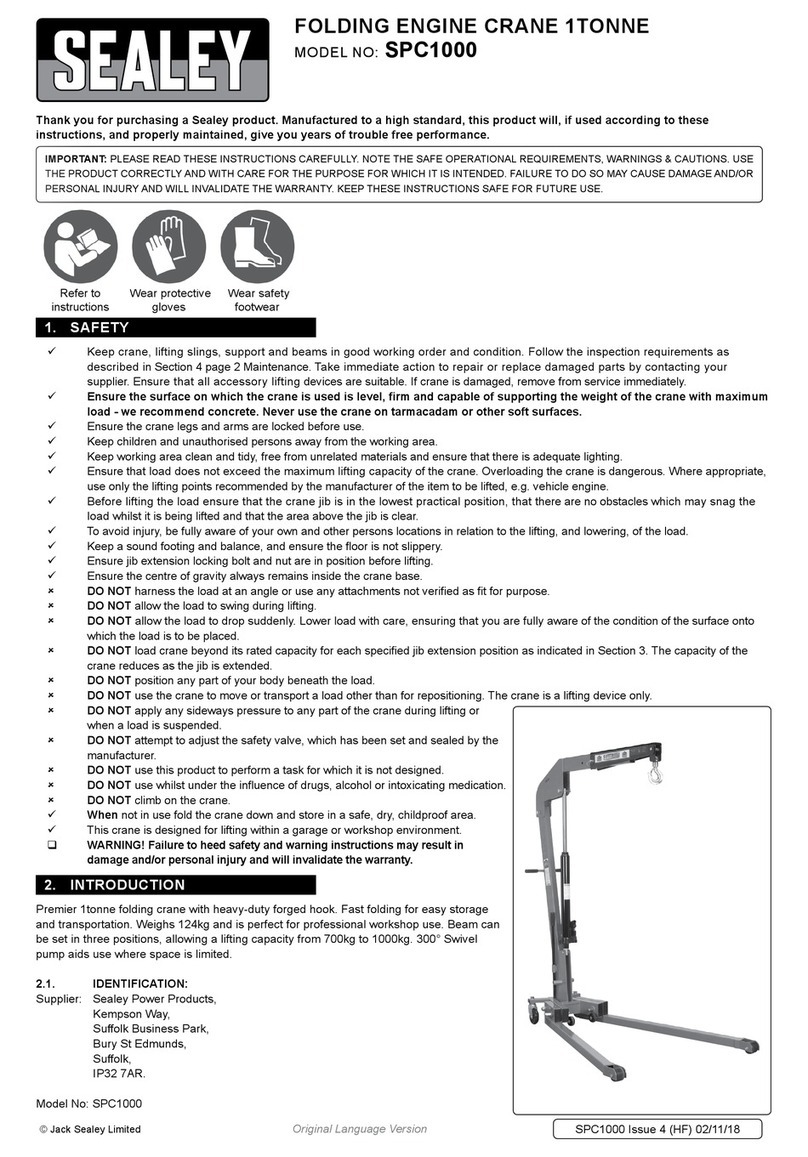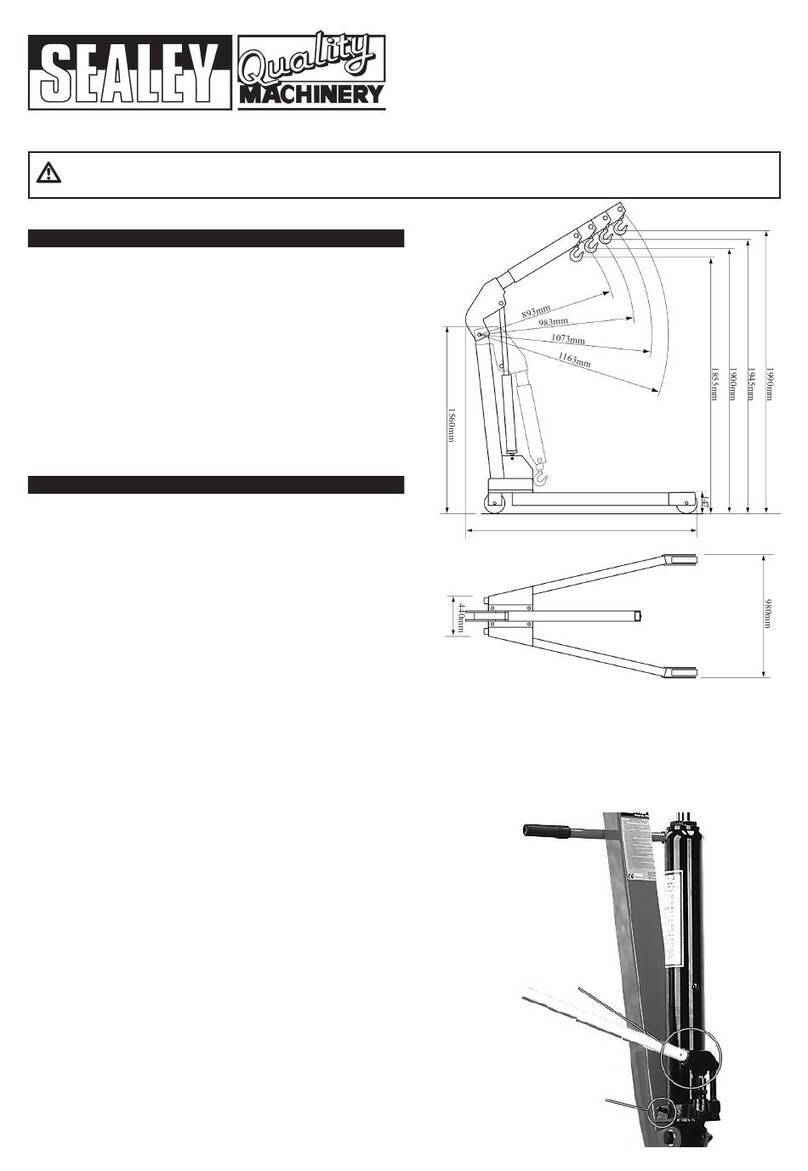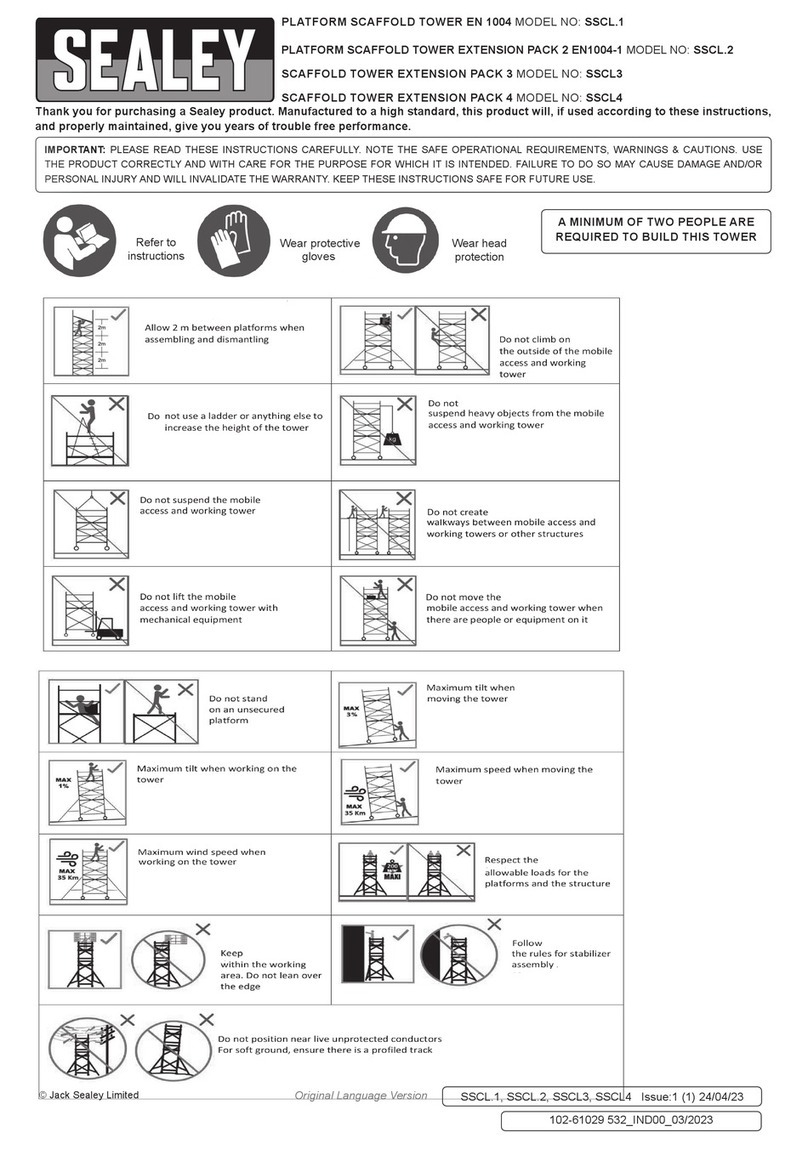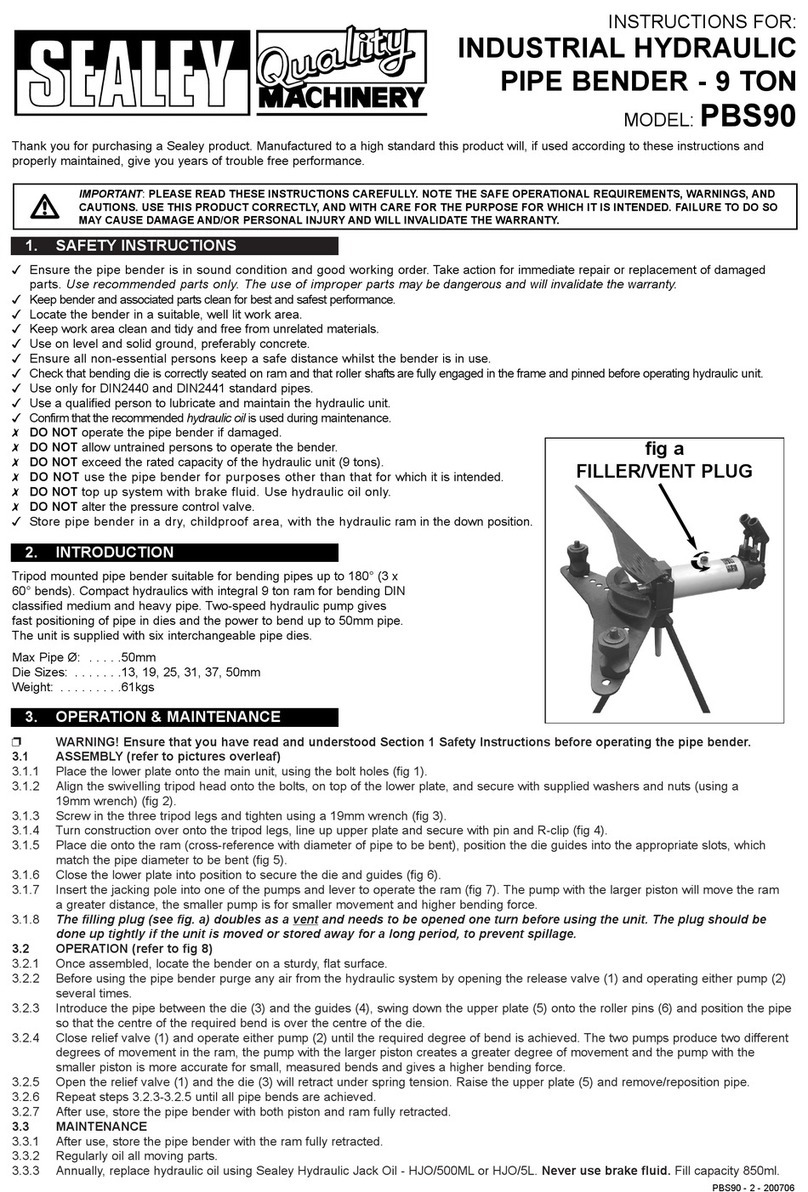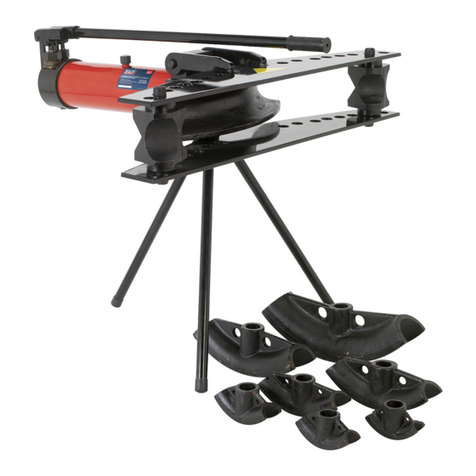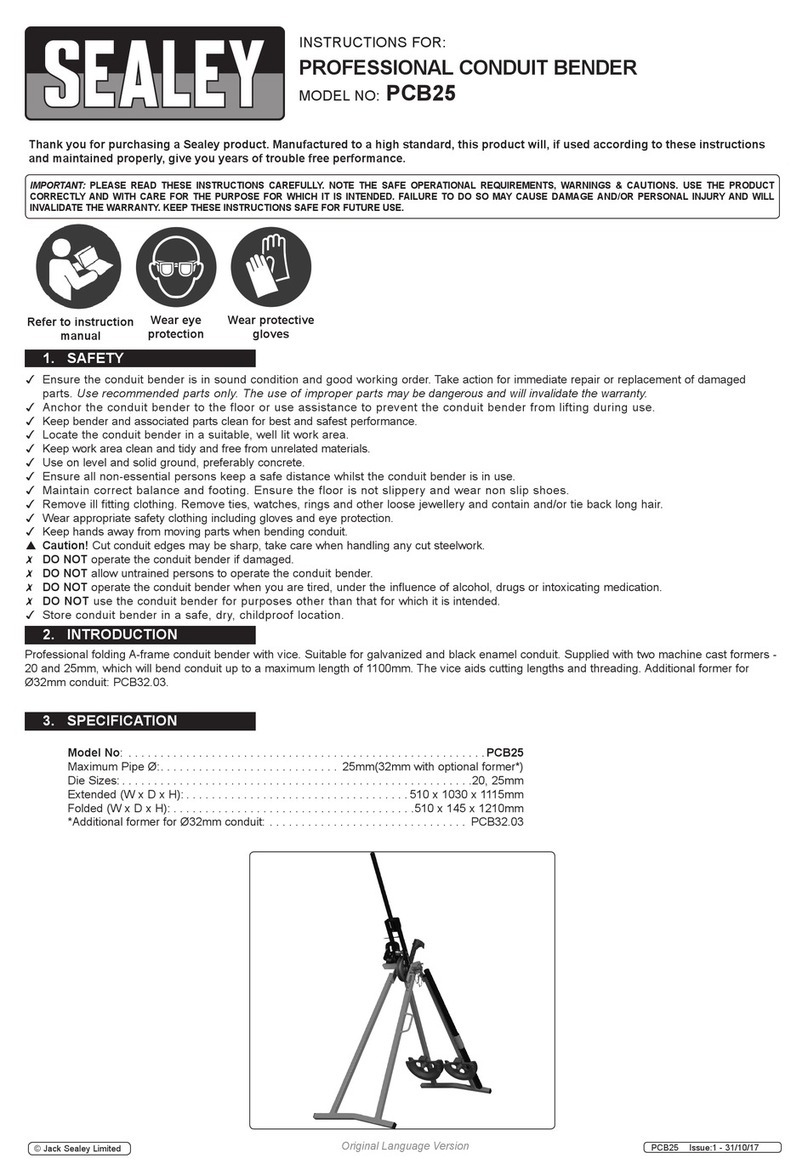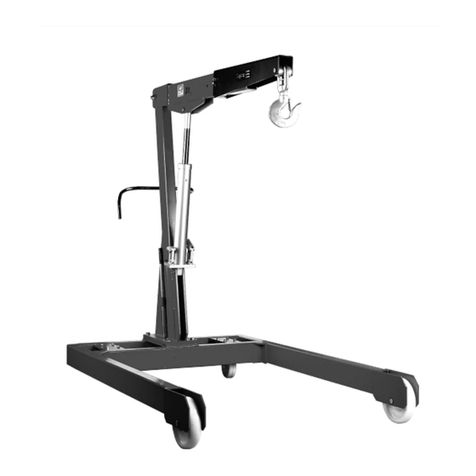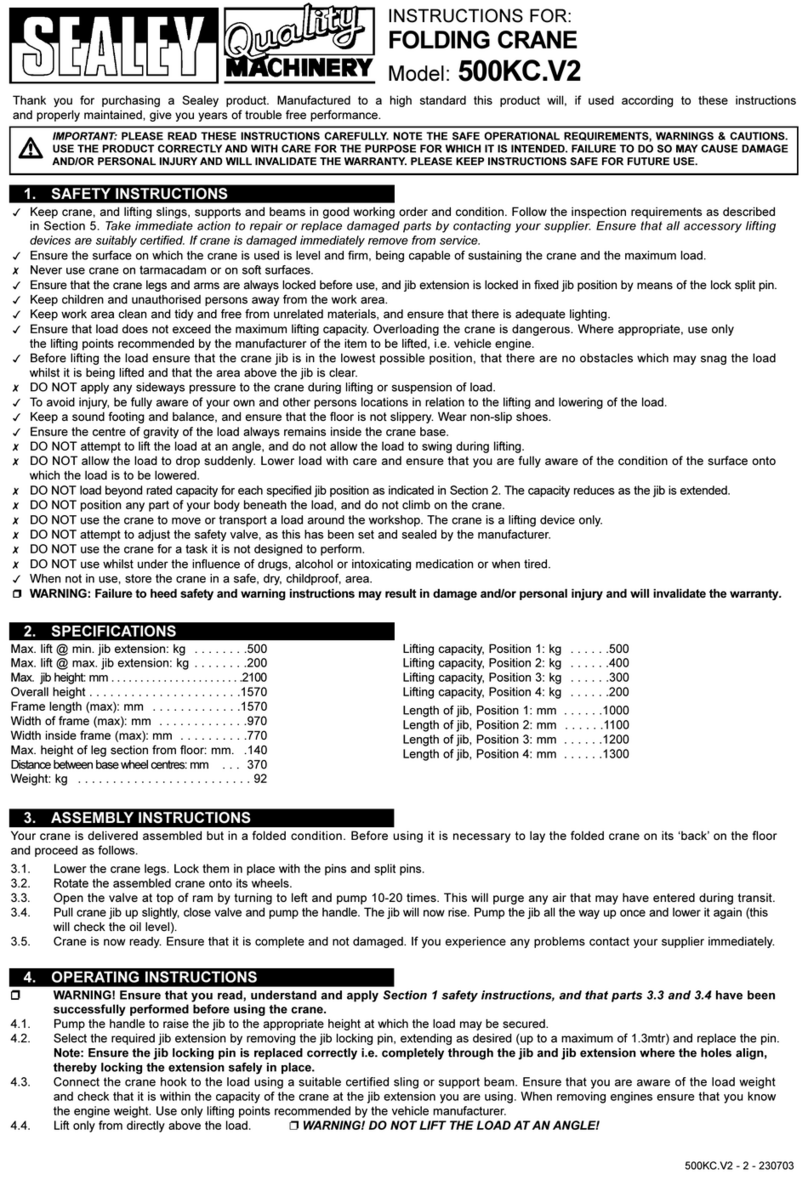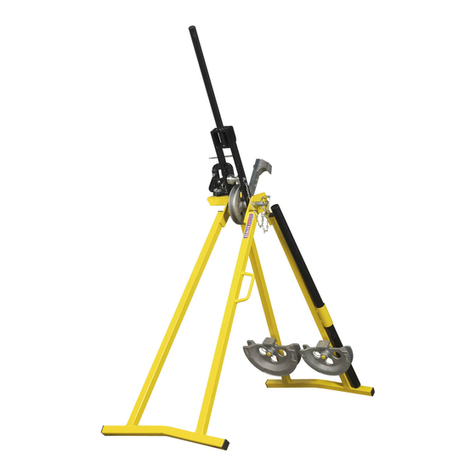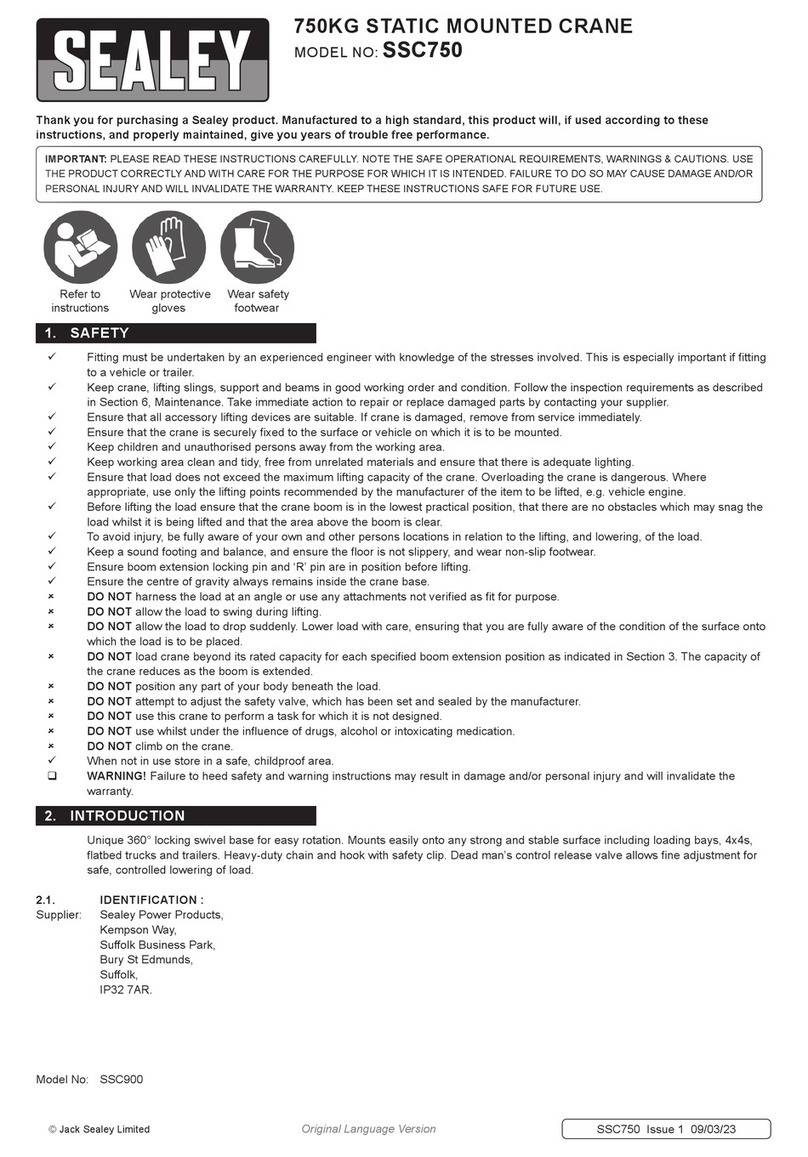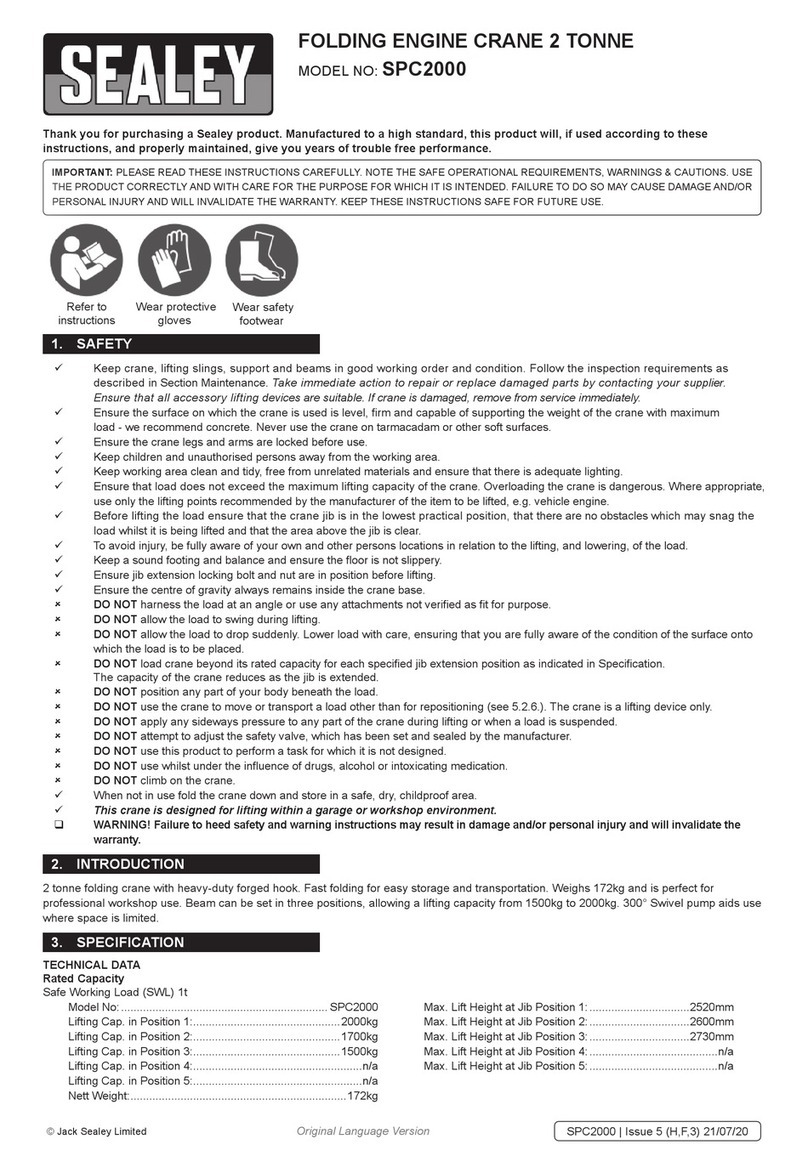
Page 3
6.3 Storage
a) Always store the crane fully closed so that the jib is in lowest position and the ram is closed.
b) To save space the legs may be folded into the upright position and secured in place using the Lock Pins.
The owner and/or operator shall study these instructions and retain them for future use.
a) Understanding instructions and warnings.
The owner and/or operator shall understand the operating instructions and warnings before operating the crane.
Warning information must be emphasised and understood.
If the operator is not fluent in English, the product instructions and warnings must be read to, and discussed with, the
operator in the operator’s native language by the owner, making sure the operator understands the contents.
b) Damaged Cranes.
Any crane which appears to be damaged, badly worn, or operates abnormally MUST BE REMOVED FROM SERVICE!
It is recommended that necessary repairs be made by an authorised service agent.
c) End of service.
Through years of normal wear, the crane will eventually become unserviceable. When this happens ensure the hydraulic oil is drained
off and disposed of in accordance with local authority regulations.
7. OWNER’S & OPERATOR’S RESPONSIBILITIES
NOTE: The crane MUST be kept clean and dry and must be maintained in accordance with these instructions.
6.1. Lubrication.
a) Oil all working parts monthly.
b) The ram is filled with oil and should only require occasional topping up. For the occasional top up DO NOT use brake fluid, as this will
damage the hydraulic seals. Proceed as follows:
a) Use only good quality hydraulic jack oil available from your supplier.
b) DO NOT OVERFILL as this will cause failure, with ram in lowered position remove rubber bung located on the ram and
top up to just below the filling hole. Replace rubber bung.
c) After filling with hydraulic oil, pump the crane up to full height and pour off any excess oil.
6.2. Inspection and Examination of Crane Before Use.
a) Before each use of the crane you must perform an inspection for leaks, damage, loose or missing parts.
b) The workshop crane must be examined immediately if it has been subject to an abnormal load or shock. It is recommended
that such an examination is made by an authorised service agent.
c) The owner and/or operator must be aware that repair of this equipment will require specialised knowledge and facilities.
It is recommended that an annual examination of the workshop crane is made by an authorised service agent.
d) Unauthorised parts may be dangerous and will invalidate the warranty.
Note! Please see the Definition of ‘inspection’ and ‘examination’ below.
Inspection:
Looking at the crane for defects and checking the operation of the controls, limiting and indicating devices without loading the crane.
This is much more than a check but does not normally require any part of the crane to be dismantled other than removal or opening
of covers or housings.
Examination:
Verification that the crane can safely continue in service including a functional test of all safety devices i.e. limiting, indicating
equipment, brakes, clutches, safety valves etc to verify that they operate within the required tolerances. An examination is more
thorough than an inspection.
6. MAINTENANCE / EXAMINATION / INSPECTION
5. OPERATION
5.1 OPERATION. (Refer to Section 6.2 (a) regarding inspection before each and every use).
a) Ensure handwheel is in the raise (fully clockwise position).
b) Place handle into pump socket and pump, the jib will raise. Continue to pump until the jib reaches the height at which the load can be secured.
c) Connect the crane hook to the load using a suitable certified sling or support beam. Ensure you are aware of the load weight,
and check that it is within the capacity of the crane (at the jib extension you are using) and the sling or support beam. When removing
engines ensure you know the weight to be lifted. Use only the lifting points recommended by the vehicle manufacturer.
d) Lift only from directly above the load. WARNING! DO NOT LIFT THE LOAD AT AN ANGLE!
e) To lower load, turn release handwheel VERY SLOWLY anti-clockwise avoiding any sudden movement.
WARNING! Do not allow the load to drop suddenly.
f) The crane is not a transportation device but may be used to reposition the load being worked on. To do so, lower load and jib
with care, to the lowest possible point before attempting to move. Do not try to move crane in a sideways direction. The crane is
not designed to support the load indefinitely. When you have repositioned the load, lower the load onto a secure and
appropriate working base, being fully aware of your own and other persons locations in relation to the lowering load.
g) When load has been secured, remove lifting sling, support beam etc. and place crane in a safe location with lifting beam fully lowered.
01284 757500
01284 703534
sales@sealey.co.uk
Sole UK Distributor, Sealey Group,
Kempson Way, Suffolk Business Park,
Bury St. Edmunds, Suffolk,
IP32 7AR
www.sealey.co.uk
Web
email
Original Language Version PH10.V4 Issue: 1 - 25/02/13
Environmental Protection.
Recycle unwanted materials instead of disposing of them as
waste. All tools, accessories and packaging should be sorted,
taken to a recycle centre and disposed of in a manner which
is compatible with the environment.
Environmental Protection.
Recycle unwanted materials instead of disposing of them as
waste. All tools, accessories and packaging should be sorted,
taken to a recycle centre and disposed of in a manner which
is compatible with the environment.
© Jack Sealey Limited
NOTE: It is our policy to continually improve products and as such we reserve the right to alter data, specifications and component parts without prior notice.
IMPORTANT: No liability is accepted for incorrect use of this product.
WARRANTY: Guarantee is 12 months from purchase date, proof of which will be required for any claim.
INFORMATION: For a copy of our latest catalogue and promotions call us on 01284 757525 and leave your full name and address, including postcode.
